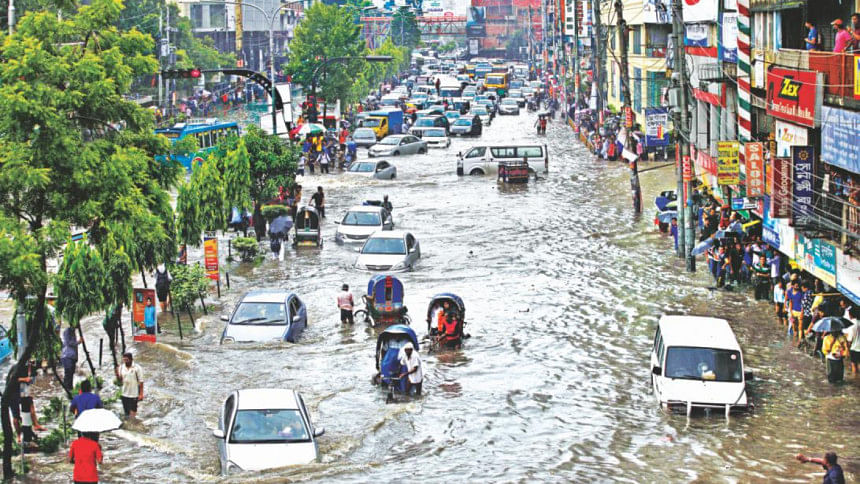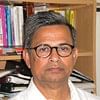Making Dhaka more liveable

I wrote an opinion piece for The Daily Star (August 17, 2017) titled "Shanghaiing" Dhaka arguing in favour of further expansion and development of Dhaka as a global city. In the same week, coincidentally, the Economist Intelligence Unit (EIU) published its Annual Global Liveability Report 2017 and ranked Dhaka as the fourth least liveable city in the world. Melbourne has been ranked as the most liveable city for the seventh year in a row with an overall rating of 97.5 out of 100, just enough to push off Vienna (97.4) and Vancouver (97.3) from the top spot. The report ranked 140 cities based on their quality of life across five broad categories (and sub-categories) with varying weighted average such as (i) stability (25 percent); (ii) healthcare (20 percent); (iii) culture and environment (25 percent); (iv) education (10 percent); and (v) infrastructure (20 percent) for a total of 100 (ideal score).
While such ratings are subject to dispute, the indicators nonetheless reflect the quality of life and social and cultural enrichment (or lack thereof) in the countries covered by the survey. The least liveable city in the world today, with perhaps few disagreements, is the Syrian capital Damascus (30.2), given the horror and hardship people have experienced in recent years and the ongoing conflict in that country. Lagos, Tripoli, Dhaka, and Port Moresby complete the bottom five in the list.
The concept of liveability simply considers cities around the world that provide the best or the worst living conditions. As evident from the 2017 report, cities from Australia, Canada, and New Zealand dominate the top 10, reflecting their improved infrastructure, good education, better environmental management, healthcare and low personal risks. It is no wonder that Dhaka was ranked 137th with an overall rating of 38.7. The top scoring cities in the global ranking share a few important commonalities that are worth noting: (i) they are generally mid-sized; (ii) located in wealthier countries, and (iii) have a relatively low population density. Lower density is often linked to lower crimes, improved risk management, better social infrastructure, higher employment rate, and improved social and economic conditions.
Dhaka is without question a densely populated city (with 43,500 people living in every square km)—one of the most populous in the world—with an estimated 15 million people in the metropolitan areas, and perhaps close to 20 million in the total urban agglomeration. The city continues to experience a steady influx of migrants—about half a million new migrants every year, according to the World Bank—to slums and bastees without any well-thought-out action plan for housing, transportation, and other basic infrastructure and civic and social amenities required for a megacity of this magnitude.
I lived and worked in Dhaka from 1966 to 1979 when it was possible to travel at ease around the city by rickshaw without any traffic jam. The city expanded enormously in all directions in the last 40 years. I still visit Dhaka two to three times a year for work. The struggles for getting around in this traffic-clogged megacity are an exhausting experience. The footpaths and walkways are mostly taken over by shops and kiosks. Its crowded streets, traffic chaos, slow-moving rickshaws, shanty towns/markets, poor sanitation, air pollution, smog, waterlogged streets and poor waste management posing serious health risks are a reminder that the city is in trouble. Many who are forced to live in slums and on the footpaths, and this would be about 30 percent of the total population of the city, deal with sanitation and water issues on a daily basis, things that we take for granted in major cities globally.
Many in Dhaka may not find it one of the least liveable cities in the world. No doubt the city has its own history, life, character, beauty and charm. With its characteristic chaos, it functions every day. However, regardless of EIU's ranking, there is no denying the fact that living conditions in Dhaka must improve and improve for all city-dwellers, particularly the underprivileged and disenfranchised urban poor. Rajuk, the capital development authority, has not paid any serious attention to the problems of housing and settlement for the urban poor. About one-third of the city population—the slum dwellers—live without water, proper sanitation, public services or legal security.
The city planners must understand that poverty in Bangladesh is rapidly shifting from rural to urban areas due to forces of globalisation, rapid urban growth rate, and increased poverty and deprivation among the most vulnerable groups in the city. The development of model towns by Rajuk is perhaps needed, but those housing schemes are increasingly the exclusive preserve of the wealthy and powerful elites. The city needs to address the housing need for the urban poor to make Dhaka more liveable for everyone.
Rajuk, in partnership with city and local governments, must address slum upgrading and rehousing for the poor; otherwise Dhaka cannot improve its image as a liveable city—it will only demonstrate a nastier side of the character of the city and its administration. One must remember that the urban poor did not appear out of nowhere; with their labour and contributions to the city, they are a vital and integral part of what made Dhaka today.
Finally, there are other equally pressing needs that the city must urgently address, including improved transportation system and provisions for mass transit; more accessible, green, clean and safer public squares, parks, playgrounds; protection of the wetland and natural water bodies in and around Dhaka; and better security. Dhaka also needs very dynamic urban governance with vision and pragmatism, sound institutions, culture of integrity, and involvement of the people and community as stakeholders in urban planning and development. Dhaka must be made more liveable. The challenge of making Dhaka more liveable should now be considered a national priority.
Mohammad Zaman is an international development specialist and advisory professor at Hohai University, Nanjing, China.
E-mail: [email protected]





Comments